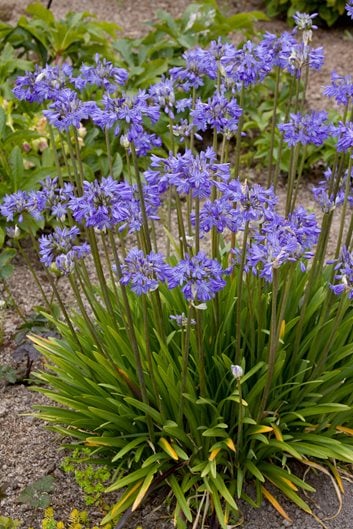Mastering the Art of Agapanthus Care: Vital Steps for Healthy And Balanced Growth and Vibrant Flowers
In the world of cultivation, the cultivation of agapanthus stands as a fulfilling venture for those that seek to support these elegant blooming plants. From choosing the right selection to understanding pruning techniques, the journey in the direction of growing thriving agapanthus plants is diverse and holds the crucial to unlocking the full capacity of these herb gems.

Selecting the Right Agapanthus Variety

When choosing the best Agapanthus variety for your yard, think about factors such as environment viability, bloom shade, and growth practice. Additionally, take into consideration the climate in your area to make certain the Agapanthus range you select can flourish in your details problems. Comprehending the growth habit of various Agapanthus varieties is crucial for appropriate positioning within your garden.
Suitable Growing Problems
Taking into consideration the optimal ecological requirements is important for effective Agapanthus farming. Agapanthus plants are delicate to cold temperature levels and should be secured from frost throughout winter months.
To make certain healthy and balanced growth and lively blossoms, plant Agapanthus bulbs at a depth of regarding 2-4 inches and space them 8-12 inches apart. Mulching around the base of the plants helps keep moisture and reduces weed development.
Watering and Fertilizing Tips
Maintaining appropriate wetness levels and giving crucial nutrients are crucial aspects in the care regimen for Agapanthus plants. When it comes to watering Agapanthus, it is important to strike an equilibrium. These plants favor regularly damp soil but are susceptible to root rot if overwatered.
Feeding Agapanthus is important for promoting healthy growth and prolific blooms. Apply a balanced fertilizer, such as a 10-10-10 formula, in the early spring as brand-new development arises. By adhering to these watering and fertilizing ideas, you can guarantee your Agapanthus plants flourish and create vivid, durable blossoms.
Trimming Strategies for Agapanthus
Trimming Agapanthus plants at the proper times and with proper methods is critical for preserving their wellness and advertising optimal development and blooming. The ideal time to prune Agapanthus is in late winter months or early springtime before new growth emerges. Begin by eliminating any yellowing or dead leaves near the base of the plant. Cut them as close to the ground as possible without damaging the arising shoots.
Deadheading spent flowers can additionally redirect the plant's power right into creating more blossoms instead than setting seeds. If you desire to accumulate seeds for breeding, leave some flowers to completely dry and fully grown on the plant.
Remember to utilize tidy, sharp tools to make specific cuts and lower the threat of introducing diseases. Agapanthus. Routine pruning will aid maintain your Agapanthus looking neat and healthy and balanced while look at this now guaranteeing a plentiful screen of attractive blooms
Taking Care Of Common Bugs and Conditions
After guaranteeing proper trimming methods for Agapanthus, it is necessary to resolve usual bugs and illness that can impact the health and vigor of these plants. One typical pest that influences Agapanthus is the Agapanthus gall midge.
One more typical issue is fungal leaf spot, which presents as dark lesions on the fallen leaves. To avoid fungal illness, ensure great air blood circulation around the plants, stay clear of overhead watering, and remove any type of contaminated fallen leaves without delay. Additionally, Agapanthus plants can experience from origin useful content rot if they are grown in inadequately draining pipes soil. To avoid this, plant Agapanthus in well-draining soil and avoid overwatering. By being watchful and taking timely activity versus conditions and bugs, you can assist your Agapanthus plants prosper and produce vivid blossoms.

Final Thought
To conclude, grasping the art of agapanthus care includes picking the appropriate variety, providing optimal planting problems, appropriate watering and fertilizing, appropriate trimming Continued strategies, and dealing with common pests and conditions. By complying with these vital steps, you can make certain healthy and balanced growth and vibrant blossoms for your agapanthus plants. Keep in mind to routinely monitor and keep your plants to promote their total wellness and longevity.
To make sure healthy development and dynamic blooms, plant Agapanthus light bulbs at a depth of regarding 2-4 inches and space them 8-12 inches apart. By adhering to these watering and fertilizing pointers, you can ensure your Agapanthus plants grow and produce lively, long-lasting blossoms.
One common parasite that influences Agapanthus is the Agapanthus gall midget. Additionally, Agapanthus plants can endure from root rot if they are planted in improperly draining soil. By following these essential actions, you can make sure healthy and balanced development and dynamic blossoms for your agapanthus plants.